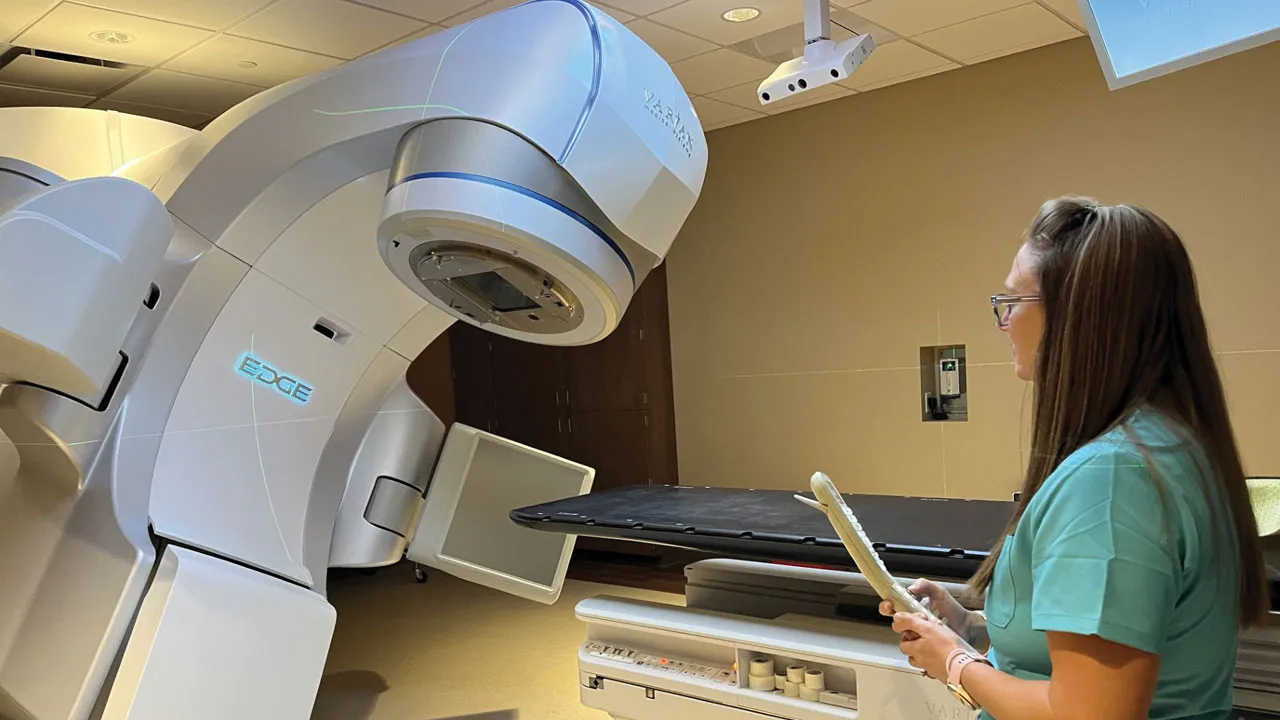Larimer’s food bank set up like grocery store
It uses a client-choice model
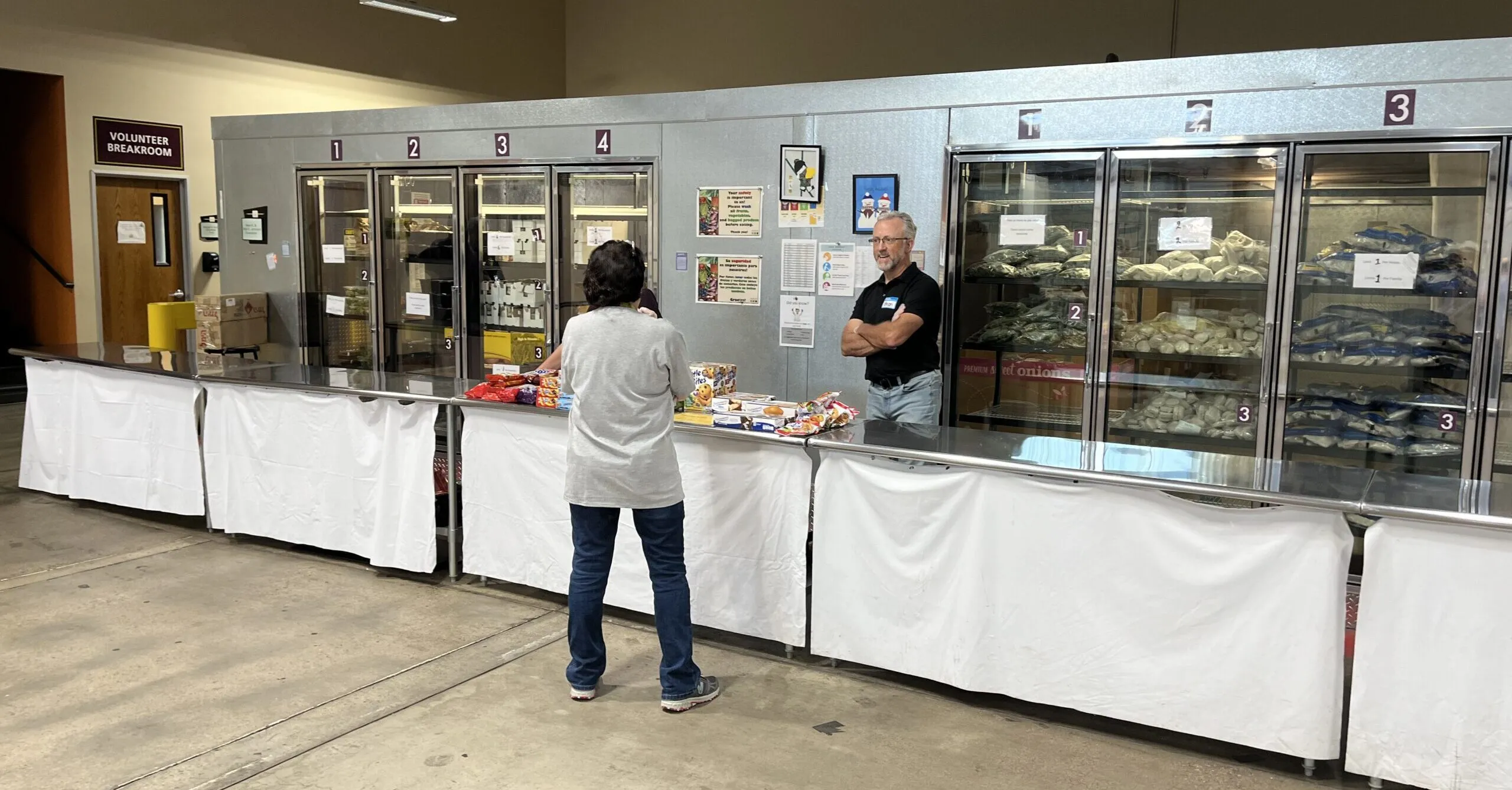
Clients going to the Fresh Food Share in Fort Collins and Loveland don’t have the typical food bank experience.
When they walk in to either facility, they grab a shopping cart, check in at intake and start shopping for fresh produce, meat and dairy, and all kinds of items that are found at the typical grocery store.
“We operate like a grocery store, but instead of checking out at the end, they check in at the beginning,” said Josh Greene, operations director of the Food Bank for Larimer County.
The Food Bank for Larimer County operates a client-choice model for its food pantry program, hosted at the two Food Shares and three to four rotating mobile pantries. Those pantries go to local churches, Global Leaders at Poudre High School and Colorado State University to distribute food in the style of a farmer’s market.
The Fresh name was added to Food Share in 2018 during the Food Bank’s rebranding effort, reflecting that 40% of the food distributed is fresh.
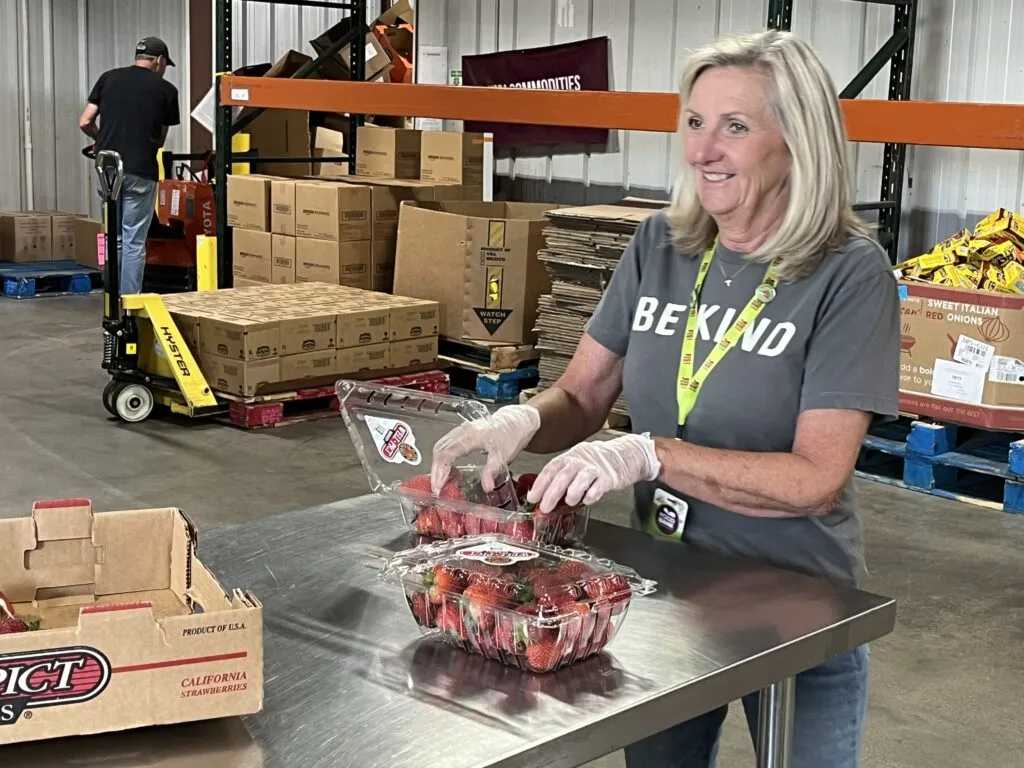
“Clients have the ability to shop for an orange or a dozen oranges,” said Mandy LeSeure, operations manager for the Food Bank. “They get a choice of what’s appropriate for their families.”
Food Share volunteers don’t have to figure out what’s best for them, prepacking boxes or bags to hand over in a one-size-fits-all format. Instead, clients can select what they want for their families based on their dietary requirements, medical conditions, food allergies and individual preferences. As they make their selections, some items will have quantity limits, with numbers based on families of four and under and double that amount for larger families, while other items aren’t limited.
“We’re open and welcoming where people can make dignified decisions,” Greene said, explaining that an outdated approach to social services is seeing clients as “beggars can’t be choosers.” “They’re still people and deserve the opportunity to choose what they’re going to eat. It’s humbling enough to ask for help, and to have the ability to choose stripped from them is demoralizing.”
Despite common misperceptions, most of the clients coming through the Food Share program are not homeless. Some are seniors on limited incomes. Others have lost jobs or are working but can’t quite make ends meet. They’re on almost every street in Fort Collins and Loveland, according to the Food Bank’s database.
“It’s a quiet, silent, very easy to miss problem,” Greene said.
The Food Bank provides clients with a portion of the food they need each week — they can stop in up to two times during pantry hours Tuesday to Saturday, unlike the typical pantry with fewer open days and number of visits allowed. Clients don’t have to meet certain income guidelines but are asked to register and at subsequent visits provide their name and birthdate.
“Nobody is required to give any information,” Greene said. “If someone comes to us and needs food, we are going to give them food no matter what.”
Fresh Food Share follows a grocery store model with products kept at eye level, items sectioned off by category and an accessible refrigerated section.
“We’re merchandising the product in a way that is visually appealing that adds to the dignity of the experience,” Greene said. “It’s a clean and tidy and well-lit facility.”
The two pantries are set up with bins full of fruits and vegetables and a variety of other daily essentials, like flour and olive oil. On an average day, the refrigerators are stocked with meat, dairy products and juice and the cooler has things like salads and fruit bowls. A bakery section features bread, muffins, donuts, cakes and other baked goods. And often there are bouquets of flowers donated by a local grocery store, plus things like bottled water and salty snacks like crackers and potato chips.
“Everything from your grocery store at some time will be at the Food Share,” LeSeure said.
The food gets placed in the bins instead of on shelves to accommodate a high product turnover, since an average of 400 to 500 individuals and families come through the two pantries every day and the Food Bank doesn’t have the staff or volunteers to be continuously stocking, Green said. Shoppers at a grocery store have maybe 20,000 items on a large sales floor with multiple aisles to select from whereas the pantries provide 20 to 30 different items in a smaller floor space, he said.
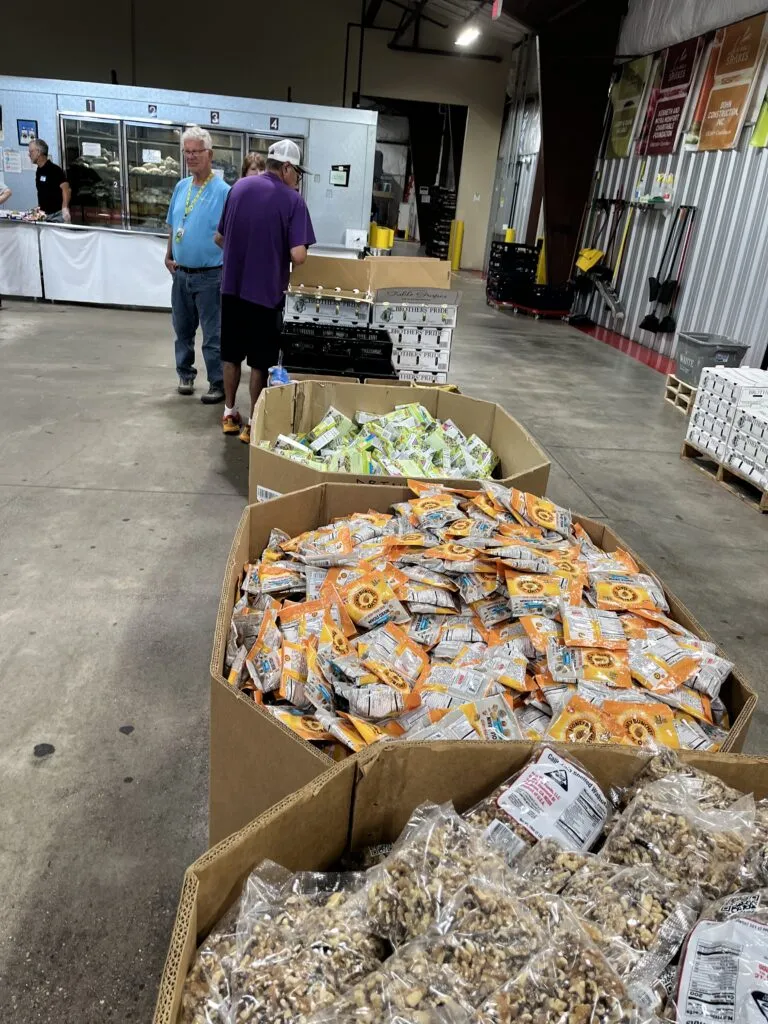
“There’s a lot of products they’re not taking,” Greene said. “Here, they’re taking one of everything. That product is going to turn over a lot faster.”
Kathleen Proulx of Loveland started going to the Food Bank in 2016 after she was laid off from her position as a registered dental hygienist, something she did for 35 years. Now, she is on disability and has retirement income, earning too much to qualify for Supplemental Nutrition Assistance Program, or SNAP. She goes to the Food Bank two times a week, mainly for meat and vegetables, and is limited in her selection due to being a diabetic and having several food allergies.
“It gives me little more leeway on some of the foods I really, really need,” Proulx said, adding that going to the Food Bank is a way to help stretch her budget. “I’m very grateful it’s here, and I’m also grateful they’re open on Saturday, too.”
Half of the produce coming in is from Feeding America and Cluster, a sourcing of product and a sharing of truckloads among several food banks, with the rest provided by the USDA, grocery and retail outlets, and donations from home gardens and farms.
Drivers pick up the retail items throughout the day and deliver them to the two Food Share facilities. Volunteers sort through the items to make sure they haven’t expired and meet quality standards, basically what they would serve their relatives (the ones they like). An average of 30 to 45 volunteers assist a staff of six at each Food Share location.
“The first person isn’t getting a better or bigger selection than the person at the end of the day,” LeSeure said.
The two pantries provided food to 25,000 unduplicated individuals in 2022, up from 2021 when the pantries assisted 20,000 individuals during the COVID-19 pandemic. At that time, additional funding was provided by stimulus checks, other state and federal programs, and an increase in SNAP benefits.
“During the pandemic, we saw our visitation drop,” Greene said. “What we found to be true is that our clients rely on us when government services fall short.”
That was evident when the emergency allotments for SNAP ended at the end of February, resulting in an increase in numbers at the food pantries the next month, Greene said. The pantries saw 11,600 individuals in February and 15,200 in March, he said.
The grocery store model has been in place since nearly the beginning of the Food Bank, founded in 1984.
The Food Bank started out like most food banks as a distribution hub, collecting canned goods to provide to other agencies. Over time, the nonprofit wanted to be able to distribute fresh produce and had products its partners wouldn’t accept. It then became a direct service when it opened its Food Share facilities, the Fort Collins Food Share in 1997 and the Loveland Food Share in 2006, followed by the mobile pantries in 2016 — the mobile pantries increased outreach to underserved areas affected by accessibility and awareness issues.
The Food Bank provides the Food Share program as one of its four pillars of service. The other service areas include providing food to 125 agency partners (1 to 1.5 million pounds of food a year), preparing meals and snacks for children and older adults, and offering an outreach branch to help with things like social service enrollment and nutrition education classes.
When it started, the Food Bank distributed 55,000 pounds of food during its first year, and in 2022, that number was 10 million pounds.
“We went from a couple of staff to around 60,” Greene said. “Our annual budget was very small, a couple thousand for one to two years (increasing) to $8 million for this fiscal year (2023-24). … By removing as many barriers as we possibly can, we are helping more people.”
SPONSORED CONTENT
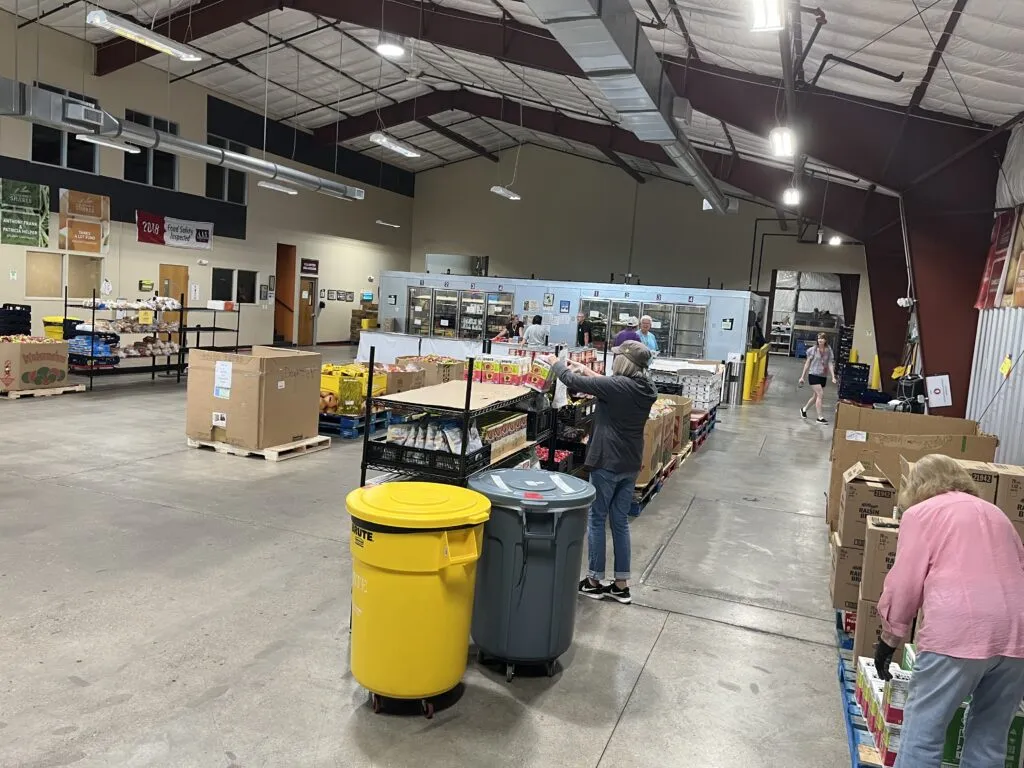
Clients going to the Fresh Food Share in Fort Collins and Loveland don’t have the typical food bank experience.
When they walk in to either facility, they grab a shopping cart, check in at intake and start shopping for fresh produce, meat and dairy, and all kinds of items that are found at the typical grocery store.
“We operate like a grocery store, but instead of checking out at the end, they check in at the beginning,” said Josh Greene, operations director of the Food Bank for Larimer County.
The Food Bank for Larimer County operates a client-choice model for its food pantry…




